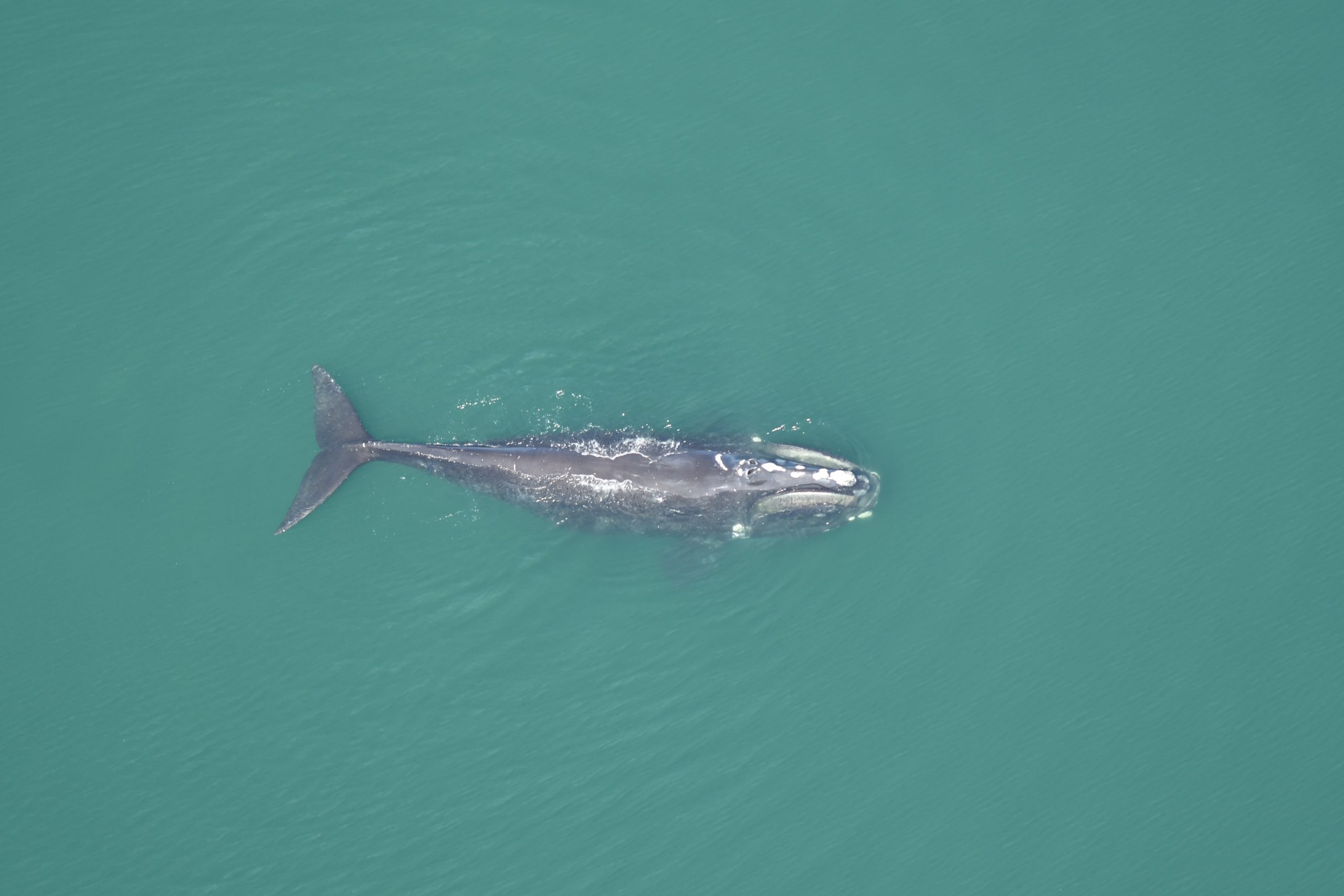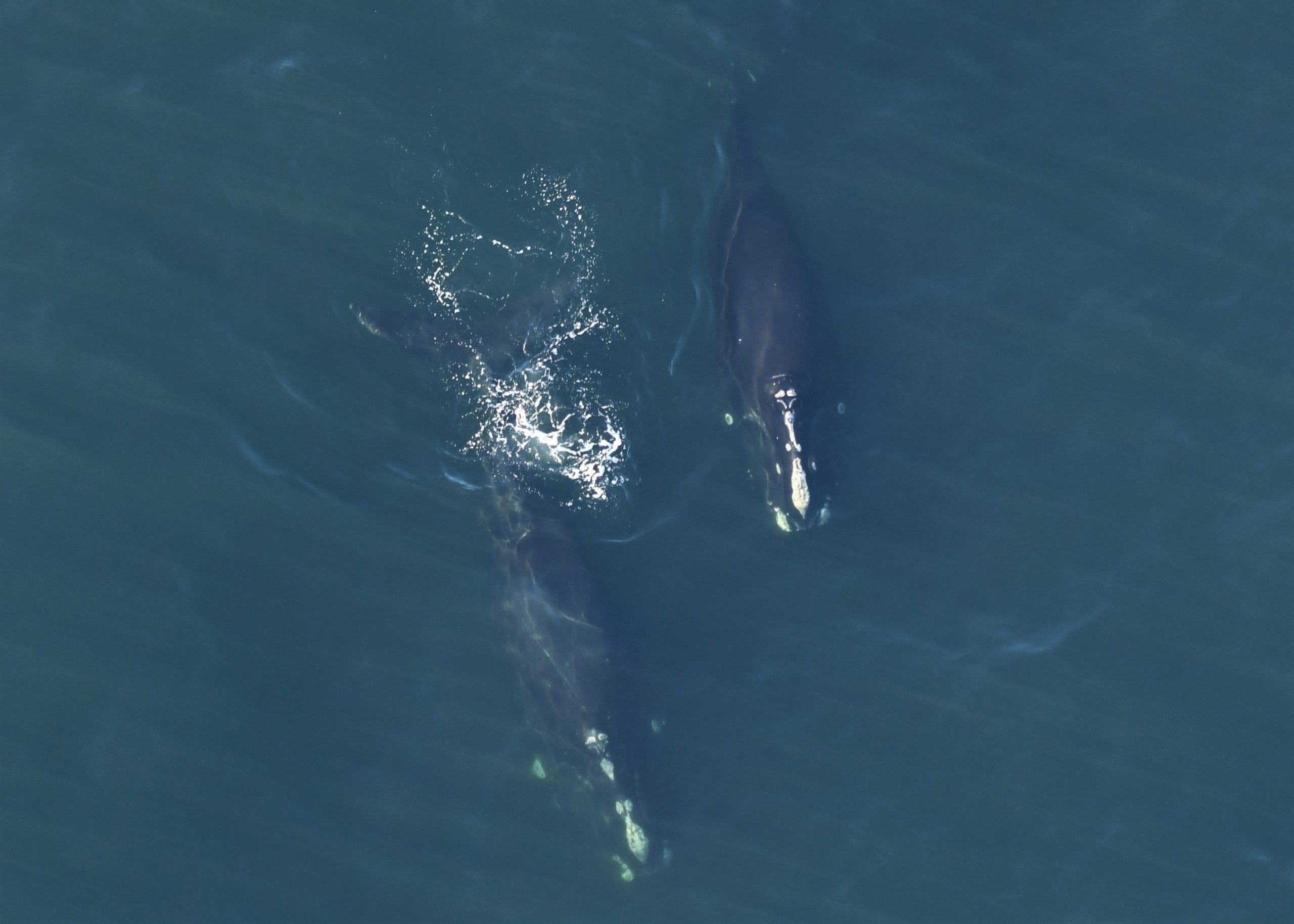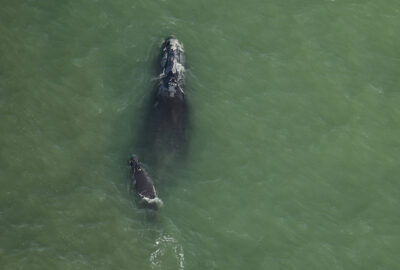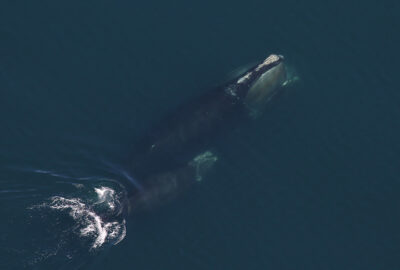New Study Shows Southern New England is a Significant Right Whale Habitat
By New England Aquarium on Wednesday, July 20, 2022


In a recent study, scientists with the New England Aquarium’s Anderson Cabot Center for Ocean Life recorded an increasing trend of North Atlantic right whales returning to historically significant habitats of southern New England. These results underscore the importance of ongoing conservation efforts for the species as warming oceans cause their migration and feeding patterns to change.
Orla O’Brien, an Aquarium associate scientist and lead author on the paper, noted that southern New England waters were once frequented by right whales. That’s evidenced in historical accounts from early whalers who spotted animals from shore and targeted right whales during their winter and spring migration. “It’s clearly some sort of historically important habitat,” said O’Brien. While her team did not draw conclusions on whether right whale populations retained cultural memory of these habitats, the study raises questions about how and why the whales are returning in numbers to these areas.
Prior to 2010, right whales followed reliable migration paths, traveling from the southeastern U.S. to Cape Cod in the winter and spring to the Bay of Fundy and Roseway Basin in maritime Canada in the summer. But, as climate change-driven ocean warming has increased, their patterns have shifted, with whales abandoning previously important feeding areas and congregating in new ones. Changes like these complicate conservation efforts as right whales spend more time in places where there are fewer mitigation measures against fishing gear entanglements and vessel strikes.

The waters off Martha’s Vineyard and Nantucket were designated as the site of the first large-scale commercial wind farm in the U.S. As a result of this, the New England Aquarium began regular aerial surveys in the region in 2011, allowing Aquarium scientists to document increasing right whale abundance over several years. O’Brien, who first participated in these aerial surveys in 2013 and rejoined in 2019, noticed a “stark change” in the number of whales in the area. “Almost immediately, it seemed apparent that there were more right whales present in winter and spring,” said O’Brien. Surveys also detected a small number of right whales in the summer and fall, suggesting year-round presence in the region.
The researchers used data collected from aerial surveys of southern New England from 2013 to 2015, and from 2017 to 2019. To estimate the abundance of whales, O’Brien and team used a rigorous method of density calculation. During these surveys, they also observed right whales feeding as well as groups of whales socializing at the water’s surface, indicating that southern New England is a significant habitat.
Returning to historical habitats, or “repatriation,” has been seen in other whale species that are experiencing population growth; as numbers increase, animals return to areas where they once faced pressure from whaling. North Atlantic right whales, however, are critically endangered, with an estimated population of fewer than 350 individuals — leading the researchers to believe climate change may be a major factor in the whales’ increasing presence in southern New England. The Gulf of Maine has warmed faster than 98 percent of the ocean, changing the distribution and availability of right whales’ primary food source and likely leading whales to forage for prey in new areas.
Climate change is just one of the stressors facing the species. Fishing gear entanglements, vessel strikes, ocean noise, and impacts from offshore wind construction are additional risks that now must be considered in southern New England as well.
Ongoing monitoring of right whales and identification of novel habitat use is essential to protecting these critically endangered animals. “That means continuation of aerial surveys, but also other means like passive acoustic monitoring and oceanographic surveys,” said O’Brien. “I think the best thing we can do right now is make sure we don’t take our eye off the ball.”
Read the complete study here
All photos taken by New England Aquarium aerial observers on surveys of wind energy areas sponsored by MassCEC, BOEM, and wind energy developers. Right whale photos taken under NMFS Research Permits.




